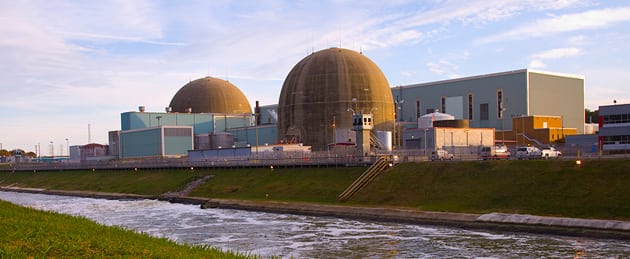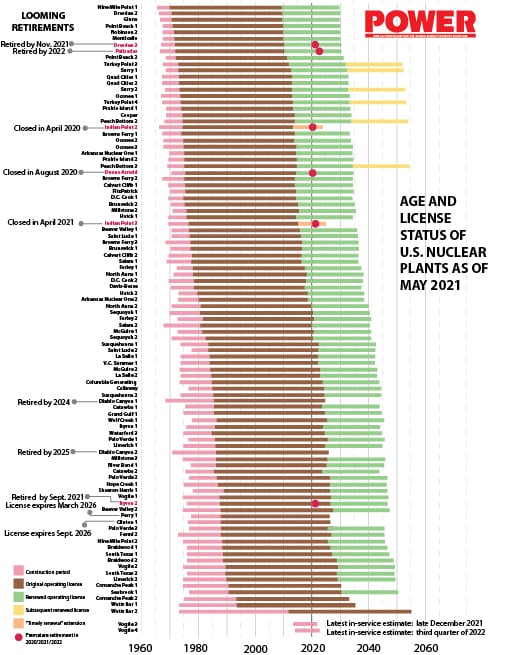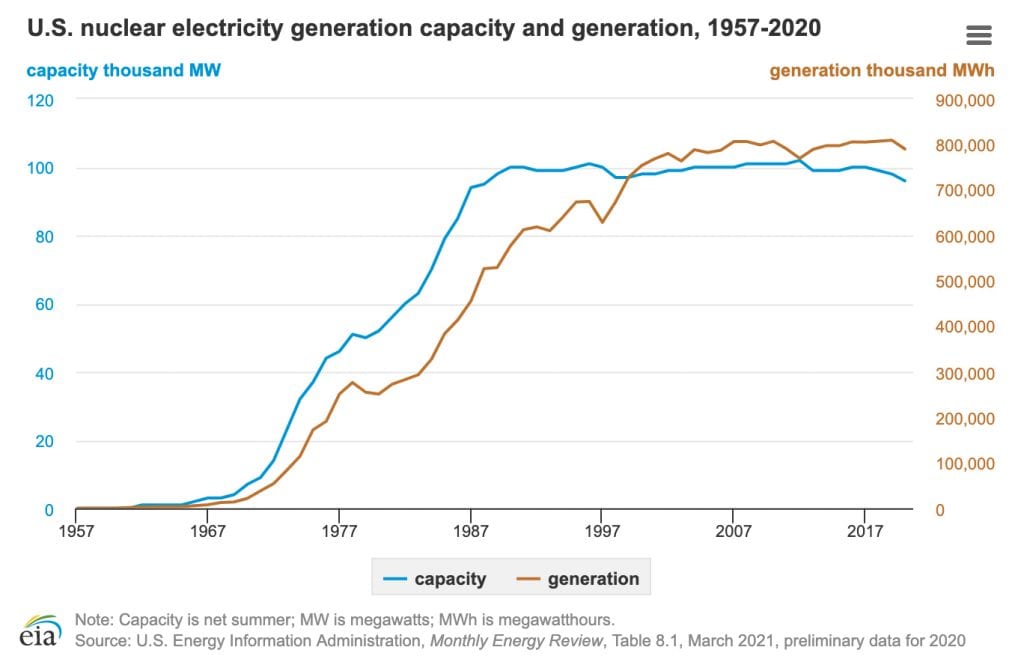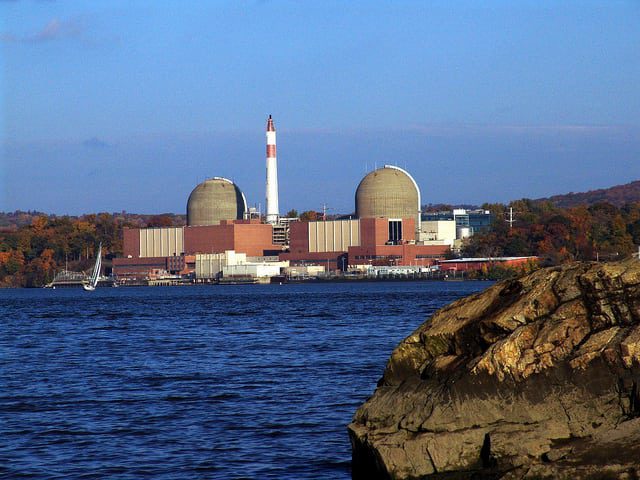Surry Nuclear Plant Gets 20-Year Extension as Indian Point Goes Dark
The Nuclear Regulatory Commission (NRC) has approved 20-year subsequent renewed licenses (SRLs) for Dominion Energy Virginia’s Surry Power Station Units 1 and 2 near Newport News, Virginia, making them only the fifth and sixth reactors in the U.S. cleared to operate for 60 to 80 years.
But the number of operating U.S. nuclear reactors fell to 93 as Indian Point Energy Center Unit 3 in Buchanan, New York, powered down for the last time on April 30. The 45-year-old, 1,041-MW unit, remarkably, ran 753 days—a world record for commercial light water reactors—before it closed, said its owner and operator, Entergy Corp.
SRLs Ensure Surry Units Can Run Through 2053
The NRC’s approval of SRLs for Virginia Electric and Power Co.’s units on May 4 means Surry 1’s operating license will now expire on May 25, 2052, and Surry 2’s, on Jan. 29, 2053. The NRC said it issued the SRLs upon completion of a staff review of Dominion’s October 2018–submitted application.

In its March 2020 final Safety Evaluation Report regarding the application, NRC staff concluded the Westinghouse three-loop pressurized-water reactors commissioned between 1972 and 1973 had managed the effects of aging and met standards for a renewal issuance.
Dominion said in a statement the nearly 50-year-old, 1.6-GW plant, which produces about 15% of Dominion’s generated power, ran at a capacity factor of 97% in 2020. The SRLs will be pivotal to their continued operation as a carbon-free source in Virginia, which, under the Virginia Clean Economy Act, requires zero-carbon electricity by 2045, it noted. The company added that it expects to file for recovery of expenditures associated with the license extension with the Virginia State Corporation Commission later this year.
The Nuclear Energy Institute (NEI) notes that half the nation’s nuclear fleet will need to obtain SRLs by 2040 to continue operating or be forced to retire. NRC records show 85 of the 93 reactors operating in the U.S. today have already renewed their operating license once, extending their lifetimes from 40 to 60 years, but the majority of these will be “nearing the end of that 20-year extension by 2029 and will be seeking to renew their license a second time, for another 20-year period,” NEI reports.
To date, the NRC has also issued SRLs for four other reactors. In December of 2019, Florida Power & Light’s Turkey Point Units 3 and 4 became the first units to receive SRLs, allowing them to operate until July 2052, and April 2053, respectively. In March 2020, Exelon’s Peach Bottom Atomic Power Station was the second site to receive second license renewals for its two units, which are now licensed to operate until August 2053 and July 2054.
At least four other nuclear reactors are in the NRC’s review pipeline for SRLs: NextEra Energy’s Point Beach 1 and 2, and Dominion’s North Anna 1 and 2. But though NEI last year predicted SRL applications will “soar in coming years,” the NRC has received no other applications.
“Surry’s second license renewal not only builds on the efforts we have seen from states to preserve their nuclear fleet but also aligns with the Biden administration’s broader policy plans,” said NEI in a statement. “This news comes at a critical time as the nation looks to achieve a 50% reduction in carbon emissions economy-wide by 2030, and the existing nuclear will play a key role in reaching our clean energy goals.”
In both Florida and Pennsylvania, “nuclear plants are especially critical to carbon-free energy generation; the plants in these states generate more than 90% of the state’s carbon-free energy,” NEI noted. On Tuesday, Dominion also pointed out that combined, Surry and North Anna represent 92% of carbon-free generation in Virginia.

2021 Shaping up to Be a Record Year for Nuclear Retirements
The SRLs are especially significant because nuclear generation has suffered a relative capacity decline over the past decade. As of May 1, 2021, there were 55 commercially operating nuclear power plants with 93 reactors—a total 95 GW—in 28 U.S. states, with two under construction (at the Vogtle site in Georgia). U.S. nuclear capacity last peaked in 2012 at about 102 GW, when there were 104 nuclear reactors in commercial operation.
Significantly, however, nuclear’s decline in capacity has been partially offset by updates at several plants and consistently high capacity utilization rates (or capacity factors). According to the U.S. Energy Information Administration (EIA), nuclear’s capacity factor in 2020 was 93%.

Also notable is the EIA’s assessment that U.S. nuclear plants generated more power than coal in 2020. “U.S. coal-fired electricity generated totaled 774 million megawatthours (MWh) in 2020, which is less than both natural gas-fired (1.6 billion MWh) and nuclear-powered generation (790 million MWh),” the EIA said. “Last year marked the first time that coal was not the largest or second-largest source of annual electricity generation in the United States since at least 1949.”
However, the EIA expects nuclear generation to fall this year owing to 5.1 GW in planned retirements. Along with closure of Entergy’s 1-GW Indian Point 3 unit last week, Exelon is scheduled to retire two of its Illinois nuclear plants, Dresden and Byron, this fall. The four Illinois reactors have a combined capacity of 4.1 GW. “If all five reactors close as scheduled, 2021 will set a record for the most annual nuclear capacity retirements ever,” the EIA said. Another plant, Michigan’s Palisades, plans to retire in 2022.
As a bright spot, though it has been besieged by delays, Southern Co.’s 1.1-GW Vogtle 3 reactor could also come online by December this year, as Tom Fanning, the company’s chairman, president, and CEO, told analysts in a first-quarter earnings call on April 29.
“The site work plan now targets fuel load in the third quarter and late December 2021 in-service date for Unit 3,” Fanning said. “Of course, any delays could result in a first-quarter 2022 Unit 3 in-service date.” Vogtle 4, Southern Co.’s second 1.1-GW AP1000 unit, is meanwhile about 80% complete, and the site’s current work plan “targets completion in the third quarter of 2022, which would provide margin to the regulatory approved November [2022] in-service date,” he said.
One Last Hurrah for Indian Point
Indian Point 3’s closure marks the end of a fruitful, even if controversy-ridden, 60-year run for the three-unit Indian Point Energy Center, a New York nuclear power plant that stood about 25 miles north of Midtown Manhattan. Its removal leaves about 3.2 GW of remaining nuclear capacity from three plants in upstate New York.

While Con Edison began operations at Unit 1 in 1962, the utility shut it down in 1974 because it lacked an emergency core cooling system. In 1971, records suggest, an arsonist set fire to a building housing much of the cooling system, causing $10 million in damage. Units 2 and 3 began operations in 1974 and 1976, respectively, but they, too, were frequently embroiled in controversy, technical mishaps, and public distrust, especially in the aftermath of Three Mile Island’s partial meltdown. In the 1990s, the site was entangled in a corruption scandal, which led to multiple shutdowns at Unit 3, including one that spanned nearly two and a half years.
Entergy purchased Indian Point Unit 3 in 2000 and Indian Point Unit 2, along with the permanently shut down Unit 1, in 2001. “Following Entergy’s purchase from two separate owners, station personnel were aligned under one owner and reliability was enhanced,” the company said. According to Entergy, gross combined generation at Unit 2 and Unit 3 before Entergy bought the two units averaged about 10 TWh each year, and in the 20 years that Entergy owned it, gross generation averaged about 17 TWh each year.
“Indian Point was a workhorse for the southeastern New York electrical grid, generating approximately 25% of the power consumed annually in New York City and the lower Hudson Valley,” the company said.
Still, after years of battling state actions that threatened the units’ output and revenues, Entergy in 2017 reached a settlement with the state to close the two units by 2021. Under that deal, the state dropped legal challenges and agreed to support renewal of the reactor operating licenses, which Entergy applied for with the NRC in April 2007. At the time, Entergy told POWER it saw no economic incentive to continue operating the plant.
“Key considerations in our decision to shut down Indian Point ahead of schedule include sustained low current and projected wholesale energy prices that have reduced revenues, as well as increased operating costs,” it said.
Indian Point Unit 2 shut down as scheduled on April 30, 2020. On April 30 this year, as control room operators shut down Indian Point 3 for the last time—753 days after it was last refueled in April 2019—Entergy hailed the plant’s performance and legacy.
“Indian Point has been operated and maintained at the highest levels of reliability, safety and security for many years, and Unit 3 has been online continuously since April 9, 2019—setting a new world record for continuous days of operation,” said Chris Bakken, Entergy’s Chief Nuclear Officer.
“Indian Point’s enduring legacy will be the thousands of men and women who operated the plant safely, reliably, and securely, while helping to power New York City and the lower Hudson Valley for nearly 60 years. We owe those who serve now, along with those who came before them, a debt of gratitude.”
—Sonal Patel is a POWER senior associate editor (@sonalcpatel, @POWERmagazine)